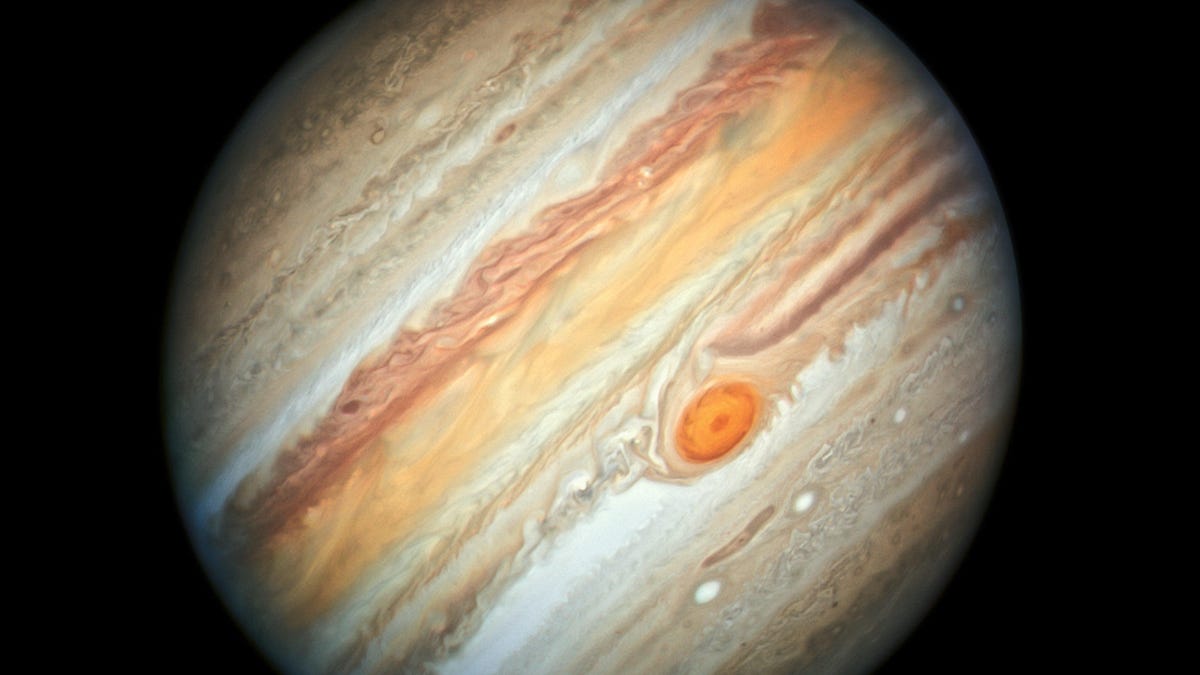Jupiter's Great Red Spot isn't dead yet, scientist says
Rumors of the super-storm's death have been greatly exaggerated, according to a team of engineers.

Hubble snapped this new view of Jupiter on June 27, 2019.
Jupiter's Great Red Spot isn't going anywhere anytime soon, according to researchers at the University of California at Berkeley.
The megastorm has been raging on the gas giant planet for the past few centuries that humans have been able to get a decent look at it, but in recent years it has appeared to be shrinking.
Concern for the imminent fate of what might be the most iconic infinite cyclone in the solar system has ramped up this year. NASA research scientist Glenn Orton told reporters earlier this year that the Great Red Spot is in "very uncharted territory," leading to a number of reports declaring the potential "death" of the spot.
But Berkeley professor of mechanical engineering Philip Marcus says the spot is in no danger of disappearing.
"We discovered that the area of the spot cloud is larger than its underlying vortex, the swirling gas that defines it," Marcus wrote Monday in The Conversation. "The cloud's shrinkage is not a harbinger of death. Based on the spot's interactions with other vortices my Berkeley group found there is no evidence that that vortex itself has changed its size or intensity."
Marcus presented his team's findings Monday at a meeting of the American Physical Society in Seattle.
Another way of thinking about it is to imagine a large truck barreling down the road at night. If mud splashes on to the truck's headlights, making them appear more dim, it doesn't change the size or power of the truck attached to the lights.
In recent years, the Great Red Spot appeared to be shedding "flakes" and "blades" of red clouds, giving the impression it may be breaking apart, but Marcus said his team's calculations show this isn't a sign the spot is ailing.
"My colleagues and I believe it will survive for many more years."
Originally published Nov. 26.

